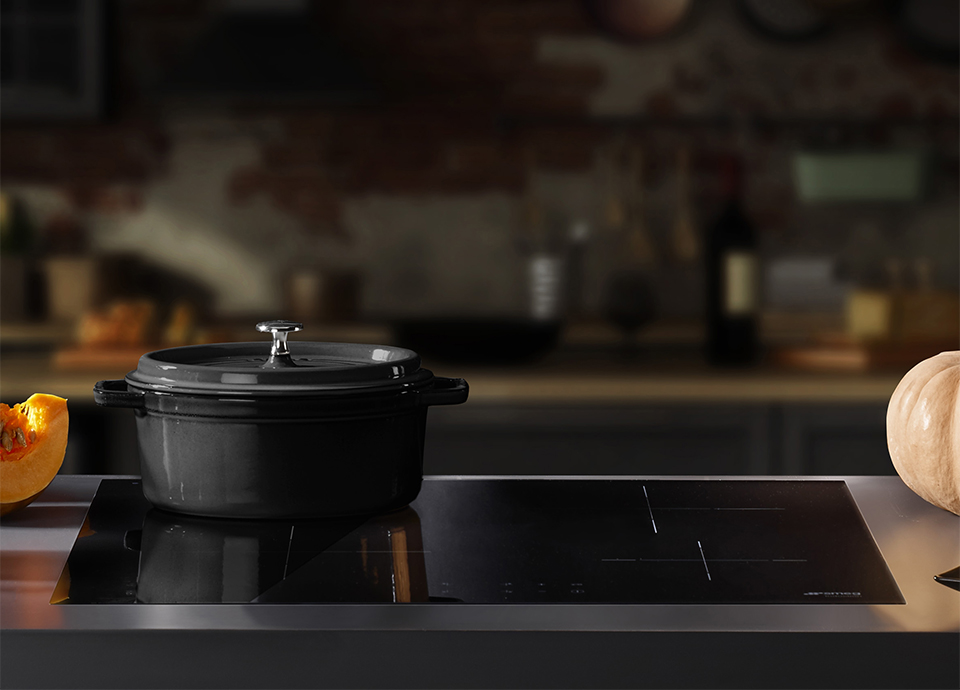Cooking Steak in Cast Iron on Induction: Perfect Every Time
Written By James Morgan
For barbecue enthusiasts, the art of grilling is a passion that extends beyond mere cooking. The aroma, the sizzle, and the flavor are all part of an experience that brings joy and satisfaction. In this journey of culinary excellence, mastering the technique of cooking steak in cast iron on induction is a milestone worthy of pursuit. The combination of a cast iron skillet and an induction cooktop offers an unparalleled cooking method that enhances the steak's flavor and texture.
Cooking steak in cast iron on induction isn't just another way to cook; it's a method that promises to elevate your steak to new heights of deliciousness. With the precise heat control of induction and the even heat distribution of cast iron, you can achieve a perfect sear and tender interior. This article will guide you through each step, ensuring your steak is cooked to perfection every time.

Why Use Cast Iron on Induction?
Induction cooking has gained popularity among culinary experts due to its efficiency and precision. But why use a cast iron skillet on an induction cooktop? The answer lies in the unique properties of both. Induction cooktops heat pans directly through magnetic fields, providing quick and even heating. This method is not only energy-efficient but also offers precise temperature control, essential for cooking steak.
Cast iron, known for its excellent heat retention and distribution, complements induction cooking perfectly. When used together, they form a dynamic duo that ensures the steak is cooked evenly, with a beautiful crust and juicy interior. The cast iron skillet's ability to hold high temperatures makes it ideal for searing, while the induction cooktop's precision allows for consistent results.
Preparing Your Steak and Skillet
Before you start cooking steak in cast iron on induction, it's essential to prepare both the steak and the skillet properly. Start by selecting a high-quality cut of steak, such as ribeye or filet mignon. Allow the steak to reach room temperature before cooking, as this ensures even cooking throughout.
Next, prepare your cast iron skillet. If seasoned correctly, it will enhance the flavor of the steak and prevent sticking. If you're unsure whether your skillet is properly seasoned, you can find helpful tips on how to know if grill grates are seasoned. Once ready, place the skillet on the induction cooktop and preheat it to the desired temperature.
The Cooking Process: Step by Step
With your steak and skillet prepared, it's time to dive into the cooking process:
1. Season Your Steak
Generously season both sides of the steak with salt and pepper. For an extra layer of flavor, consider adding garlic powder or your favorite steak seasoning blend.
2. Sear the Steak
Once the skillet is hot, add a small amount of oil with a high smoke point, such as canola or vegetable oil. Carefully place the steak in the skillet, ensuring it makes full contact with the surface. Sear each side for about 2-3 minutes, or until a golden-brown crust forms.
3. Finish Cooking
After searing, lower the heat to medium and continue cooking to your desired doneness. Use a meat thermometer to check the internal temperature: 125F for rare, 135F for medium-rare, 145F for medium, and 160F for well-done.
4. Rest and Serve
Remove the steak from the skillet and let it rest for 5-10 minutes before serving. This allows the juices to redistribute, ensuring a juicy and flavorful bite.
Common Mistakes and How to Avoid Them
Even seasoned barbecue enthusiasts can make mistakes when cooking steak in cast iron on induction. Here are some common pitfalls and tips to avoid them:
Overcrowding the Skillet
Avoid placing too many steaks in the skillet at once. Overcrowding lowers the temperature and prevents proper searing. Cook in batches if necessary.
Not Preheating the Skillet
Preheating is crucial for achieving a good sear. Make sure the skillet is hot before adding the steak to prevent sticking and ensure even cooking.
Ignoring the Resting Period
Resting allows the steak's juices to settle, resulting in a more flavorful and tender bite. Don't skip this important step.
Enhance Your Grilling Skills
For those looking to take their grilling skills to the next level, exploring additional resources can be invaluable. Consider reading about the best grill grates for searing, or learn how to measure grill grates effectively. These insights can help you perfect your grilling technique, whether you're using a traditional grill or experimenting with induction cooking.
Cooking Steak in Cast Iron on Induction: A Culinary Adventure
In conclusion, cooking steak in cast iron on induction is a rewarding culinary adventure that offers a perfect sear and delicious flavor every time. By understanding the benefits of induction cooking and the unique properties of cast iron, you can elevate your steak-cooking skills to new heights. Whether you're a seasoned grill master or a beginner, this method promises to impress your taste buds and those of your guests.
For more information on induction cooking and its benefits, consider exploring additional resources such as Homes and Gardens. This site provides detailed insights into how cast iron works on induction cooktops, helping you make informed decisions in your culinary endeavors.

Frequently Asked Questions
Can you use cast iron on an induction cooktop?
Yes, cast iron is compatible with induction cooktops. The magnetic properties of cast iron make it an excellent choice for induction cooking, offering even heat distribution and excellent heat retention.
What is the best oil for searing steak?
When searing steak, it's best to use oils with high smoke points, such as canola, vegetable, or grapeseed oil. These oils can withstand high temperatures without burning, ensuring a perfect sear.
How do you know when the steak is done?
Using a meat thermometer is the most accurate way to determine when a steak is done. For rare, aim for 125F; medium-rare, 135F; medium, 145F; and well-done, 160F.



